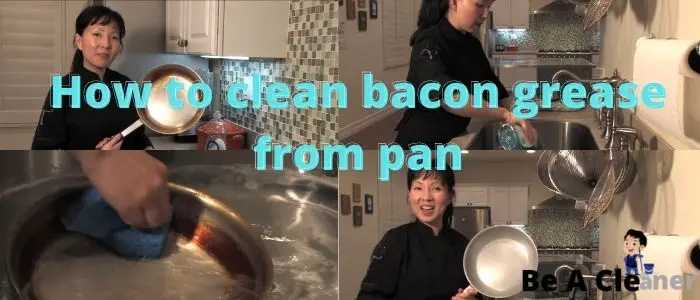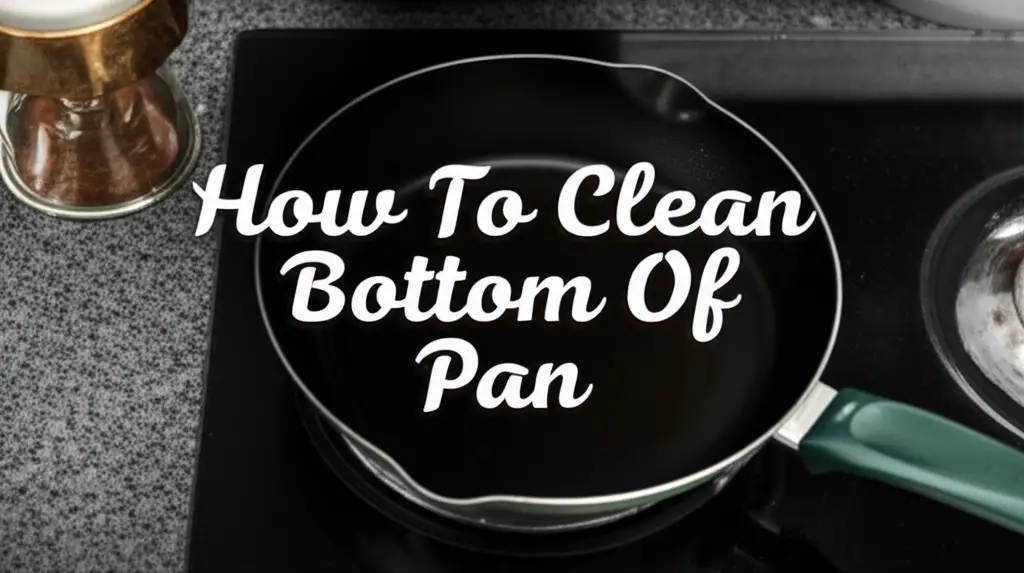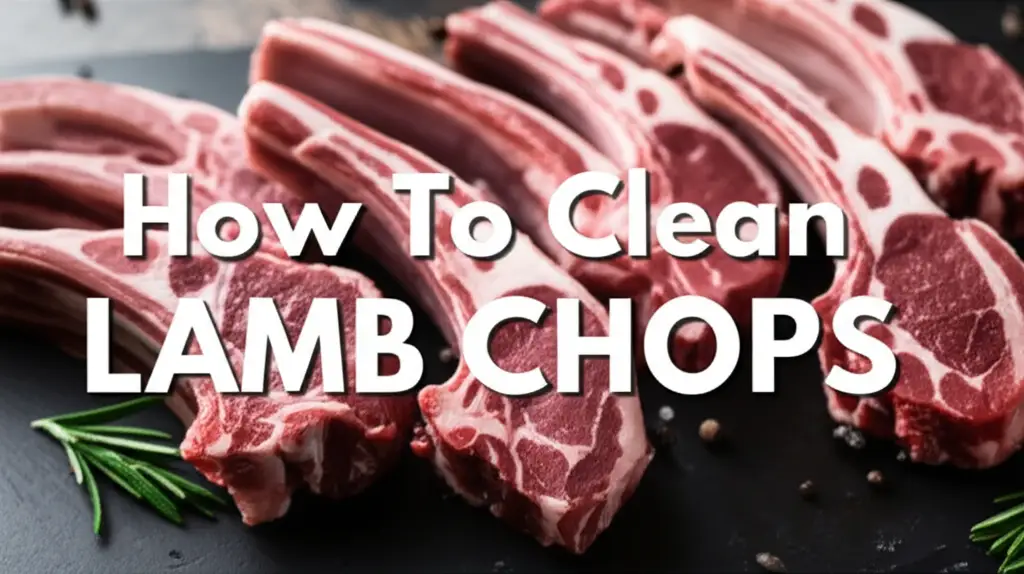· Kitchen Cleaning · 4 min read
How to Clean Bacon Grease from Pan

Cleaning bacon grease from pans is one of the most challenging kitchen tasks many home cooks face. The stubborn, sticky residue can seem impossible to remove, especially when it hardens. The good news? With the right approach and common household ingredients, you can easily clean bacon grease and restore your favorite pans to their former glory.
Why Bacon Grease Is Difficult to Clean
Bacon grease contains animal fat that solidifies as it cools, creating a sticky, hard-to-remove residue that bonds to cooking surfaces. When not cleaned properly, this residue can:
- Affect the flavor of future dishes
- Reduce the non-stick properties of your pan
- Create a breeding ground for bacteria
- Shorten your pan’s lifespan
Essential Ingredients for Cleaning Bacon Grease
Before we dive into the cleaning methods, gather these common household items:
- Warm water
- Dish liquid
- Baking soda
- White vinegar
- Sea salt
- Hydrogen peroxide
- Toothbrush (for hard-to-reach areas)
- Paper towels
- Scrubbing pad (non-metal)
- Protective gear (optional): gloves, mask, goggles
Method 1: Baking Soda, Hydrogen Peroxide, and Dish Liquid
This powerful combination works through chemical reactions to break down stubborn grease without damaging your pan’s surface.
Steps:
Create the cleaning paste: Mix 2 tablespoons of baking soda with 1 tablespoon of hydrogen peroxide in a small bowl. Add a few drops of dish liquid and stir until you have a smooth, consistent paste.
Apply and wait: Spread the paste evenly over the bacon grease in your pan. Make sure to cover all affected areas. Let it sit for 10-15 minutes to allow the mixture to break down the grease.
Scrub thoroughly: Using a non-metal scrubbing pad, gently scrub the pan in circular motions. For hard-to-reach corners, use an old toothbrush.
Rinse clean: Wash the pan with warm water to remove all residue. If any grease remains, repeat the process.
Method 2: Vinegar, Dish Liquid, and Sea Salt
This alternative method uses vinegar’s acidity to break down grease, while sea salt provides gentle abrasion for stubborn spots.
Steps:
Vinegar soak: Pour white vinegar into the pan until it completely covers the greasy areas. Let it soak for one hour to soften the hardened grease.
Add sea salt: Sprinkle two tablespoons of sea salt into the vinegar. Gently swirl it around and let sit for another 15 minutes.
Add dish liquid: Add one tablespoon of dish liquid to the mixture and scrub the pan until the grease begins to lift.
Extra cleaning power: For particularly stubborn grease, add more sea salt and dish liquid as needed.
Rinse thoroughly: Wash with warm water until all cleaning agents and grease are removed.
Tips for Preventing Bacon Grease Buildup
- Immediate action: Wipe pans with paper towels while still warm (but not hot) to remove excess grease before it hardens.
- Hot water rinse: Rinse with hot water immediately after cooking to prevent grease from solidifying.
- Proper disposal: Never pour bacon grease down the drain. Instead, collect it in a container for disposal or reuse.
- Regular maintenance: Clean pans thoroughly after each use to prevent buildup over time.
What to Avoid When Cleaning Bacon Grease
- Metal scrubbers: These can damage non-stick coatings and scratch stainless steel or cast iron surfaces.
- Harsh chemicals: Abrasive cleaners can damage cookware finishes and potentially leave harmful residues.
- Excessive soaking: For cast iron pans, prolonged soaking can lead to rust.
- Dishwasher cleaning: Many quality pans should not be cleaned in dishwashers, as the harsh detergents can damage coatings.
Final Thoughts
With these simple methods using common household ingredients, removing bacon grease doesn’t have to be a dreaded kitchen task. Regular maintenance and proper cleaning techniques will keep your pans in excellent condition for years to come.
Remember that different pans may require slightly different approaches:
- Non-stick pans: Use extra gentle scrubbing to preserve the coating
- Cast iron pans: After cleaning, always re-season with a light coat of oil
- Stainless steel: Can handle slightly more vigorous cleaning but avoid abrasives
By following these straightforward methods, you’ll extend the life of your cookware while ensuring your food always tastes its best.
Have you tried these methods? Do you have your own tricks for cleaning bacon grease? We’d love to hear about your experiences!
- bacon grease
- pan cleaning
- kitchen maintenance




